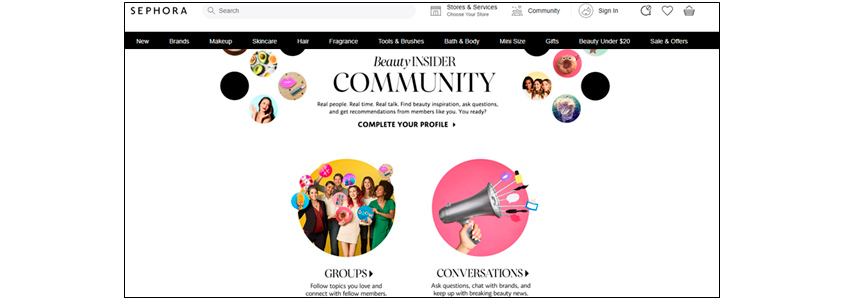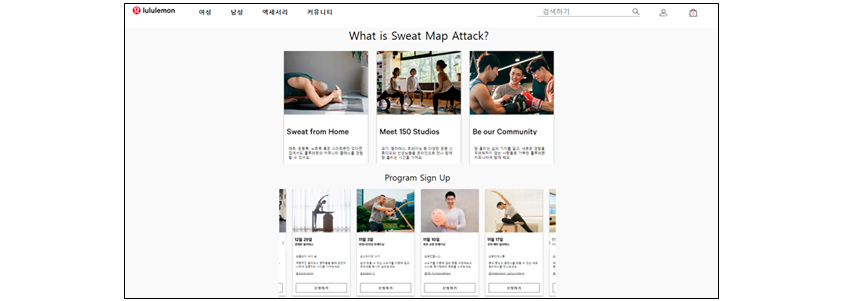
Preface
Overflowing brands and services in the market are providing consumers who purchase products with numerous choices. An American market research company, NielsenIQ, announced in 2019 that on average more than 30,000 new products are released in the consumer packaged goods (CPG) market every year. However, for brands, a variety of products means huge pressure on maintaining existing customers. What resolves such risks is retention marketing.
Retention marketing is a method of marketing that minimizes the disengagement of customers a brand already has and increases the persistency rate. It plays an important role in the growth and success of a business in terms of affordability, return on investment (ROI), loyalty, and referrals.

- 1. Affordability - securing new customers costs 6-7 times more than it does to maintain existing ones
- 2. Return on investment (ROI) - A 5% increase in the customer persistency rate leads to a 25-95% increase in company profits
- 3. Loyalty - loyal customers who make up 20% of the whole customer base create more than 80% of the sales
- 4. Referrals - 83% of loyal customers tend to recommend the brand to friends after a positive purchase experience
As retention marketing is becoming important, the “brand community,” a program for promoting long-term loyalty, has been in the spotlight for ideal marketing for maintaining and managing existing customers. The brand community shares the identity and values of the brand, works as a catalyst that forms strong bonds between the brand and its customers, and is used as a place for communications.
Especially as the internet has become popularized, an online community of people who adore the brand has naturally developed with ever stronger cohesion. As a result, the brand fandom was maximized, bringing more loyal customers, and the major global brands are stepping up to enhance brand loyalty through differentiated community strategies, such as supporting use, sharing experience, or expanding participation. In this article, we’ll go through the differentiated community operations strategies of major global brands with examples.
Supporting use: Airbnb
Airbnb is a broker platform company that collects hosts from all over the world and provides shared homestays to travelers. The service depends on various factors of the hosts, including nationalities, culture, and characteristics, making the stay different for the travelers every time. Therefore, Airbnb opened a global host community and has been constantly communicating with them to provide a consistent brand experience and value. Hosts not only get guidance from Airbnb, but also share related knowledge, interests, or difficulties with each other and get help for operating the service better.
 [Figure 2] Airbnb Global Host Community
[Figure 2] Airbnb Global Host Community
Sharing experience: Sephora
The Beauty Insider Community can be pointed out as a factor that drove the growth of Sephora, a premium cosmetics select shop which started in France. Sephora built an online playground where the members can play around and constantly provided content they’d be interested in, such as slides or swings, so that the members can voluntarily hang out and have fun on the community platform.
Members with similar interests, such as skincare or cosmetics, communicated in real time and shared information in small groups, resulting in the natural brand lock-in effect. Moreover, they let them tag the product they purchased and share photos and videos of their make-up, providing other members with indirect experiences, which naturally led to purchase and increased sales.
 [Figure 3] Sephora Beauty Insider Community
[Figure 3] Sephora Beauty Insider Community
Expanding participation: Lululemon
Lululemon, or the “Chanel of yoga outfits,” is one of the typical success cases in community-oriented marketing. Llululemon is utilizing regional ambassadors to expand community marketing, instead of customer marketing like TV commercials, based on their vision of “to be the experimental brand that ignites a community of people living the #sweatlife through sweat, grow and connect.”
Local sports instructors with expertise, not celebrities, become ambassadors and give free yoga classes. That’s when the Lululemon store is used as a place for communications for the brand and community members as well as for a community classes, not for sales. Since the COVID-19 restricted their classes in their stores, they quickly turned them to online video classes and spread their healthy influence.
 [Figure 4] Lululemon Sweat Life Community
[Figure 4] Lululemon Sweat Life Community
Epilogue
The one-way era where a brand plans and produces products and uses mass media to promote sales has ended. Now is the era of co-creating where brands and consumers make everything together. They should keep in mind that the community where brands support and consumers voluntarily participate actively turns one-time buyers into loyal fans.
References
[1] https://nielseniq.com/global/en/insights/analysis/2019/bursting-with-new-products-theres-never-been-a-better-time-for-breakthrough-innovation/
[2] https://blog.hubspot.com/service/customer-retention
[3] https://hbswk.hbs.edu/archive/the-economics-of-e-loyalty
[4] https://media.bain.com/Images/BB_Prescription_cutting_costs.pdf
[5] https://blog.adobe.com/en/topics/cmo-by-adobe
[6] https://jobsinmarketing.io/blog/referral-marketing-statistics/
[7] https://community.withairbnb.com/t5/Community-Center/ct-p/community-center
[8] https://community.sephora.com/
[9] https://www.lululemon.co.kr/ko-kr/sweat-map-attack-2021.html
▶ The content is protected by the copyright law and the copyright belongs to the author.
▶ The content is prohibited to copy or quote without the author's permission.

Marketing Strategy Team, Consulting Business Unit, S-Core Co., Ltd.
He is conducting customer experience-oriented marketing strategy projects based on his global strategy consultation experiences on the Marketing Strategy Team in the Consulting Department.
